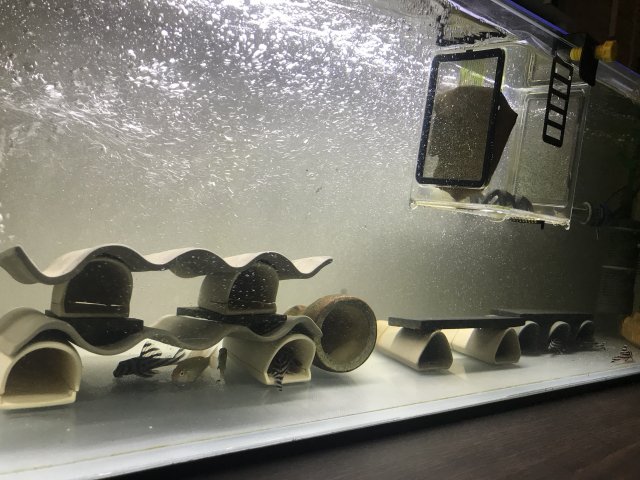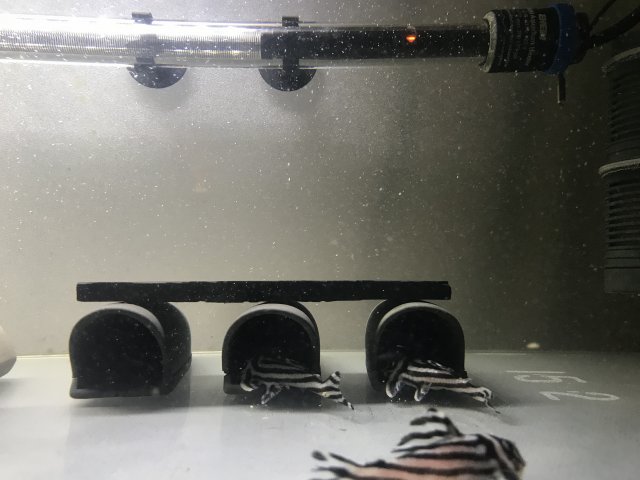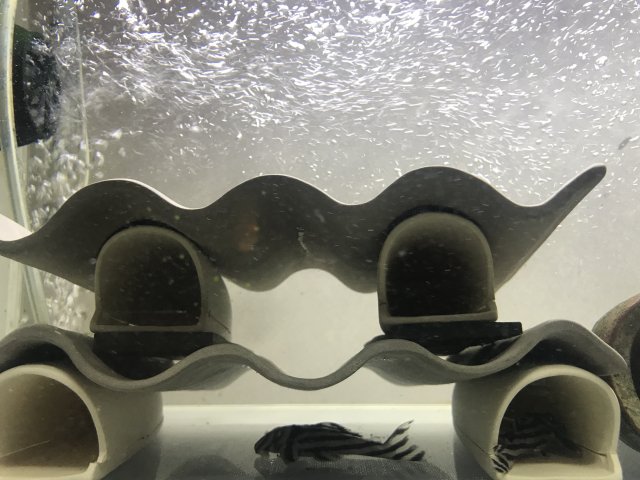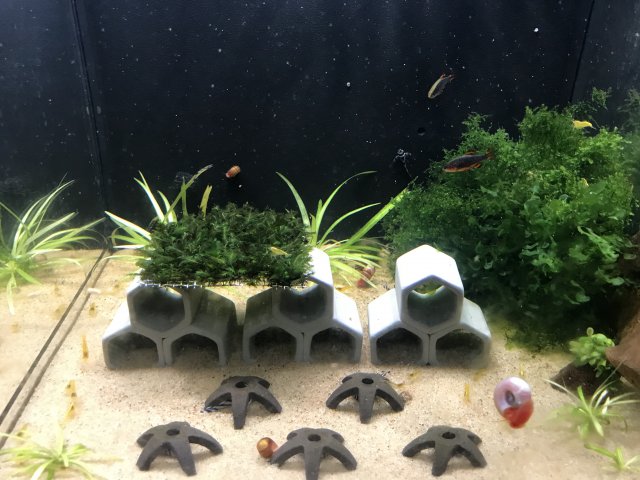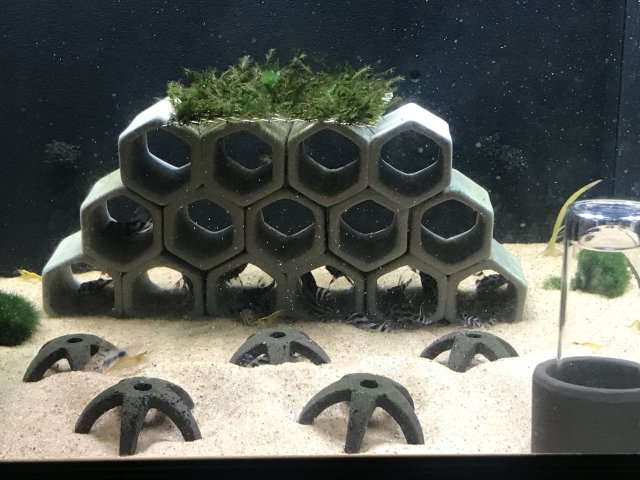This is all great information! Thank you.I started spawning zebras in 2006. I still keep a bunch but am not spawning them much because i am working with other species. However, the ideal ratio re sex is a reverse trio- 2 males and 1 female. A female takes about two weeks to be able to provide eggs again. But the male needs roughly 4 weeks from the time he fertilizes the eggs to the time he boots free swimming fry out of the cave.
I am one who works with colonies rather than pairs or reverse trios. I will have at least 7 and as many as 15 plecos in a brreding setup. (I do have one tank with over 20 but it is an exception). It is important to understand that females establish a pecking order just like the males. Nature works to encourage mating between the strongest individuals. So only the top females will get a chance to spawn with the top males.
This also can lead to a downside. Most dads will try to sneak out of the cave to grab something to eat now and then. They cannot go 4 weeks without eating. Sometimes a lesser female will take that opportunity to dash into the cave and eat eggs or wigglers. While raising newborns, a dad wont allow a female into the cave. He will not spawn with another gal until the kids are out. (Sometimes an initial spawn will have a second female enter the cave almost immediate;ly and the male may spawn with her as well. But this is a rarity. I have only read about it but never experienced it.)
Next, most zebra breeders will tell you that the fry grow faster when in the breeding tank than they do in a grow tank. I have come to believe some of this is due to the fact that the babies lack some needed gut bacteria and that they obtain from eating a bit of poop from more mature fish. I cannot prove this or find science to back it up. But when I need to use a grow tank for newborn zebras, I move a bit of adult poop into the tank as well. However, I also keep a mix of different sized fish in most grow tanks. As a result there will always be "mature" poop available to new additions should it ne needed.
Finally, how to setup a breeding tank can be done in various ways, it depends on one's preferences and available space. If one is going to have multiple size fish in a zebra tank, you should also have multiple sized hiding places. Fry want to hide where bigger fish cannot fit. So a breeding cave is useless. A crevice in driftwood or tucked under a rock is their preference. And because the bigger fish will fish, and males might do so to the death, they too need good places to hide. Normally such fights end with the lose running away and hiding where the winner can't see it. Without the ability to do this, it may be relentlessly pursued.
So breaking up lines of sight help with this. The more crowded a tank, the more cover there should be.

One last observation. I had 13 breeder zebras in a 30 gal. breeder tank. 36x18x12 inches. My first fry hunt I removed 53 offspring from the tank. i hade already moved out about 15 from a plumbing issue and I would find the fry inside a H.O.T. Magnum. I also pulled a caves with a dad on eggs because i knew I had too many fry. That tank produced about 500 zebras over a 4 year span. Only two males spawned out of the 13 fish. OK, one time a 3rd male went and I had 3 spawns at the same time in different stages. This never happened again.
If you need help, feel free to shoot me a PM. I am retired and generally answer pretty fast.
I do plan to setup a biotope tank for them with lots of rocks. The only thing I’m hesitant about in this type of tank is not being able to remove the rocks all the time to get crud that builds up in between.
Also still researching what kind of flow to create in the tank. Do you know how much flor I should be aiming for? I’m new to power heads and see they are rate for gph turnover. I was thinking I would need between 500-600gph for a 20g long tank.



